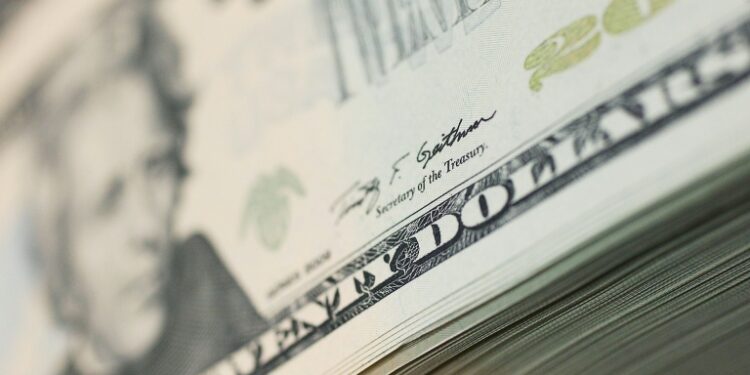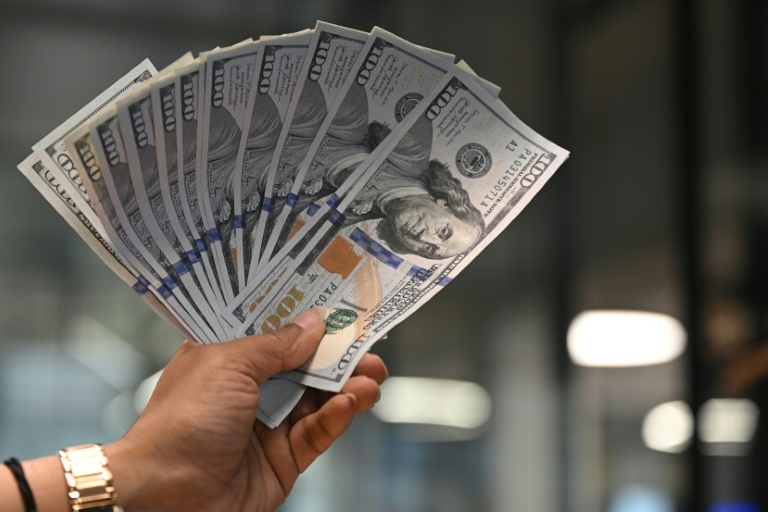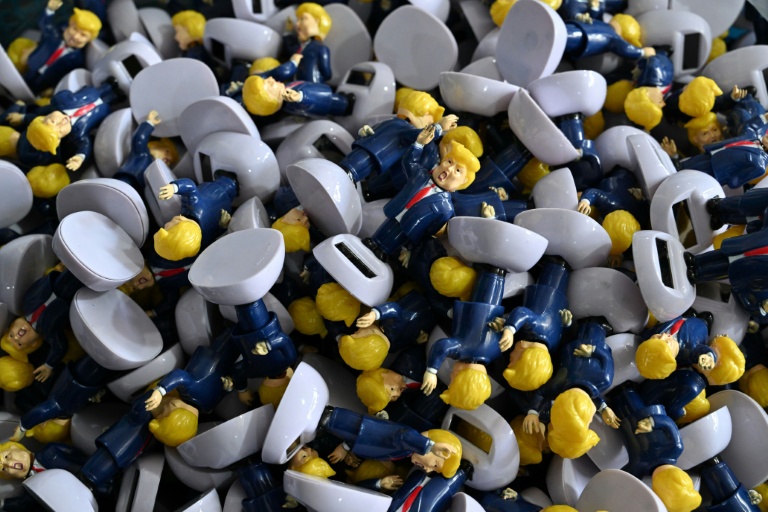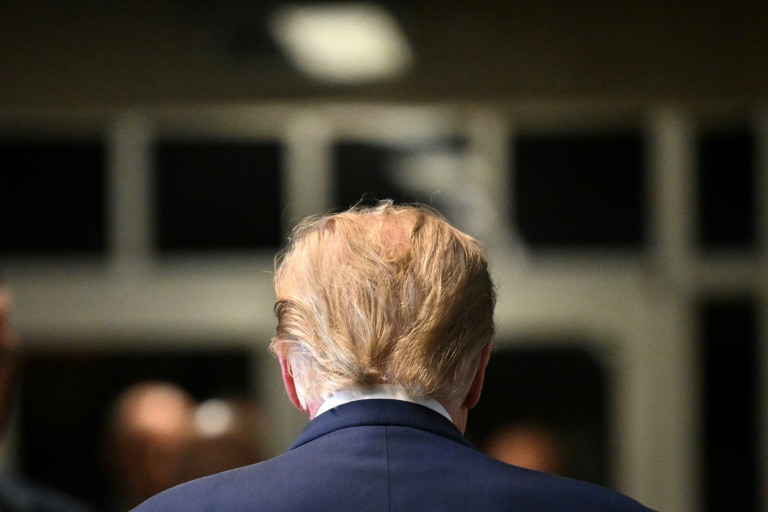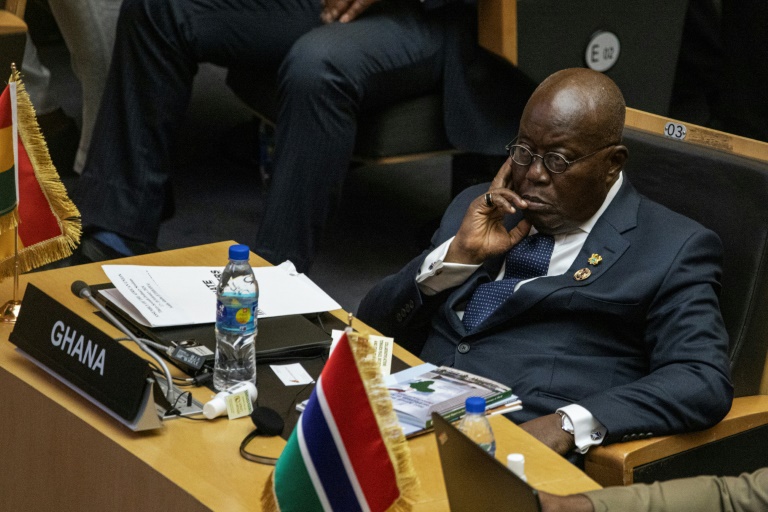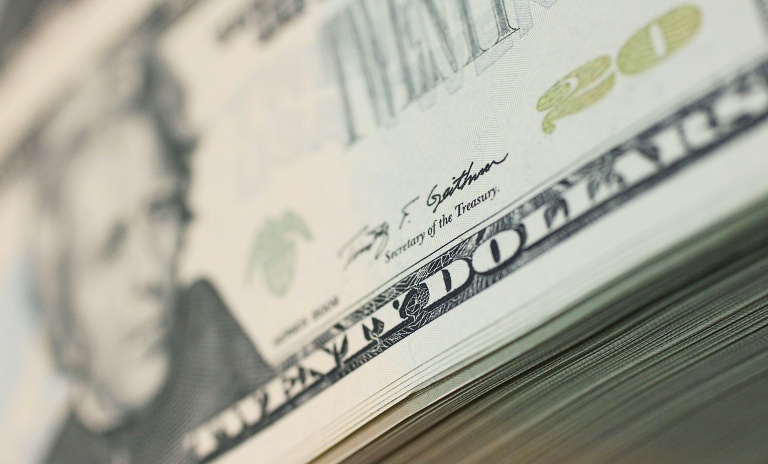New York (AFP) – The US has long been considered a financial safe haven. The sell-off of the dollar, stocks, and Treasury bonds in a spree sparked by panic at President Donald Trump’s trade war is starting to raise questions about if that’s still true.
What happened this week to US assets? US equities and the greenback have been under pressure for weeks. This week, the volatility spread to the US Treasury market, long considered by global investors to be a refuge. On Wednesday morning before Trump announced he was pausing many of his most onerous tariffs for 90 days, yields on both the 10-year and 30-year US Treasury bonds spiked suddenly. Trump’s pivot — which sparked a mammoth equity market rally Wednesday afternoon — also provided temporary relief to the US Treasury market. But yields began rising again on Thursday.
“There’s clearly a flight from US bonds,” said Steve Sosnick of Interactive Brokers. “That money is flowing out of the US bond market and doing so very quickly.” JPMorgan Chase CEO Jamie Dimon rejected the notion that US Treasuries were no longer a haven but acknowledged an impact from recent market volatility. “It does change the nature a little bit from the certainty point of view,” Dimon said Friday, while adding that the United States still stands out as safe “in this turbulent world.”
Why are investors fleeing US bonds? The most obvious reason is that the near-term outlook on the US economy has deteriorated, with more economists betting on a recession due to tariff-related inflation and a slowdown in business investment amid policy uncertainty. That’s a big shift from just 80 days ago at the World Economic Forum where “everyone talked about US supremacy,” BlackRock CEO Larry Fink said Friday.
Analysts also see the reaction as stemming from Trump’s policies, such as his “America First” agenda that frays ties with other countries and his proposed tax cuts that could mean bigger US deficits. “Unconventional policies that gamble with a country’s public finances and/or its growth outlook can cause bond investors to question the assumption that government debt is risk-free,” said a note from Berenberg Economics. “The breakdown in the relationship between US Treasury yields and the dollar highlights the concerns of investors about Donald Trump’s policy agenda,” Berenberg said. Analysts have said some of the selling in US Treasuries is likely from equity investors who need to raise cash quickly. There has also been speculation that the Chinese government could liquidate US Treasury holdings in the US-China trade war, although such a move would also badly hit Beijing.
What will happen next? The safe nature of US Treasury bonds is connected to the reserve currency status of the dollar, a feature that allows the United States to operate with much larger fiscal deficits than other countries. Since Trump’s inauguration, the euro has risen 10 percent against the greenback. Still, there is very little talk of a shift in the dollar’s status anytime soon. The greenback is the currency in which oil and other global commodities trade. Central banks around the world will continue to hold assets in dollars and US Treasuries.
“There will be scarring impacts from this, but I don’t think it’s going to dislocate the dollar as the de facto global currency,” said Will Compernolle of FHN Financial. “I just don’t see any other alternative for now.” BlackRock’s Fink remains bullish on the United States long-term, noting planned investments in artificial intelligence and infrastructure that will fuel growth. Trump policies such as tax cuts and deregulation will “unlock an amazing amount of private capital,” predicted Fink, who believes this upbeat future has been “obscured” by tariffs. Morgan Stanley CEO Ted Pick said corporate deals could soon pick up, viewing Trump’s proposed tax cuts and deregulation as catalysts that may allow clients to say, “we will go forward.”
© 2024 AFP

